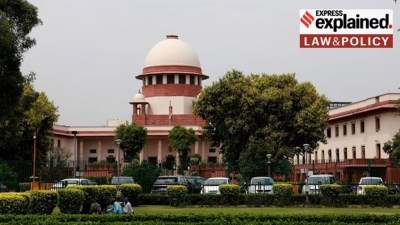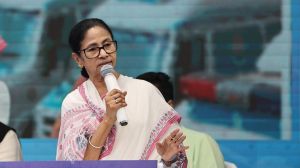Rise in sickle cell disease puts MP tribals at risk
BHOPAL, OCT 6: The recent reports about rise in the cases of sickle cell disease in Mandla district of Madhya Pradesh have confirmed anthr...

BHOPAL, OCT 6: The recent reports about rise in the cases of sickle cell disease in Mandla district of Madhya Pradesh have confirmed anthropologists’ worst fears. Poverty, malnutrition and genetic deformities are driving many endogenous tribes of central India toward extinction.
“Nearly 20 per cent of Madhya Pradesh’s 1.5 crore tribal population suffersfrom the disease,” says D.S. Mathur, state’s Principal Secretary (Health). Many of them die without medical care since science has so far failed to find any remedial measures.
The genetic disorder, which is transmitted from parents to their offspring,affects the oxygen-carrying capacity of the red blood cells. It has a lifespan of 30 years and causes swelling in the limbs, pain in joints andenlargement of spleen. Death occurs due to Hepatitis, anaemia and otherinfections.
Primitive tribes like the Abhujmarias of Bastar, the Baigas of Mandla, theBharias of Patalkot and the Bhils Bhilalas of Jhabua and Dhar are the worstvictims of sickle cell disease in central India.
The Baigas formed more than four per cent of MP’s tribal population in 1921. They now make up barely one per cent, no thanks to malnutrition, inbreeding,sexual diseases and lack of hygiene. “Few children survive beyond their early teens,” says Ramanna of Loop, a typical Baiga village of 325 families inKawardha district. More than half the families in the village have only one or two children — none of them above 14 years.
The population of the Maria tribals in Abhujmar area of Bastar is shrinkingeven faster. This Naxalite-affected belt has the highest incidence of sicklecell disease and least access to medical and healthcare facilities. What’s more, the Bharia tribals of Patalkote valley of Chhindwara district and the Bhilalas of Kukshi area of Dhar have registered negative population growth during the past decade.
A 1991 study conducted in the tribal areas of MP by the Indian Council of Medical Research (ICMR) showed that the disease afflicted 15 to 45 per cent of population in most central Indian tribes across 19 districts. “Its incidence in MP is as high as observed in the central Africa,” notes Dr K.K. Khare, Director (Epidemic Control), MP government.
Recent reports, however, indicate that it is spreading among the non-tribals also. “Backward communities living in and around the tribal areas have also acquired the disease,” Dr Khare points out.
Experts put the estimated number of sickle cell patients in MP at over 50 lakh. “Over one lakh couples in the eligible age group are expected to be at risk of having offsprings with sickle cell disease. This means an addition of 5,000 new sickle cell-afflicted babies every year,” says a recent study by RMRC, Jabalpur.
Ironically, though the disease was first discovered in India among thetribals of Nilgiris in Tamil Nadu in 1952, no study has ever been carried outregarding the clinical profile, prognosis and effective management of the disease.
“Since there is no treatment, these disorders can be tackled only throughpreventive measures such as genetic counseling and health education,” admitsMathur. The state government had sent a proposal to the Centre for the study of sickle cell disease and its effective management and is awaiting its clearance, he added.


- 01
- 02
- 03
- 04
- 05





























